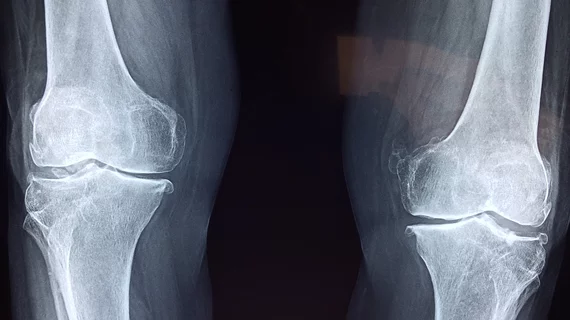Ultrasonography a swift and sound alternative to MRI for diagnosing anterior knee pain
Ultrasonography can serve as a swift and sound alternative to MR imaging for diagnosing anterior knee pain, experts reported Thursday.
Magnetic resonance is the go-to method of assessing this frequent cause for orthopedic consults. But scientists recently tested out US as an alternative, highlighting their work in Insights into Imaging.
Egyptian imaging experts used both modalities on 143 patients with clinically confirmed anterior knee pain, and US demonstrated high diagnostic accuracy for the indication.
“Although MRI is the gold standard technique for AKP imaging, ultrasonography can be used to make a swift screening and assessment of the painful anterior knee and can be used as an alternative to MRI when MRI is unavailable or contraindicated,” Mohammad Abd Alkhalik Basha, with the Department of Radiodiagnosis at Zagazig University, and colleagues wrote Oct. 1.
However, MRI may still be warranted, the authors cautioned, if a patellar cartilage defect is suspected, or ultrasound yielded negative results.
All told, 155 knees were included in the study, with 26 demonstrating no abnormality. Nineteen showed up positive for AKP on MRI only, while 110 were positive on both modalities. And the two reported 11 different findings for causes of the knee pain. Those included joint effusion (38%), trochlear cartilage defect (20.6%), and superficial infrapatellar subcutaneous edema (20%).
US logged a sensitivity rate of 85.3% and 100% specificity, Basha and colleagues concluded. A receiver operating characteristic curve analysis calculated overall accuracy of US with an area under curve of 0.93. Overall Kappa agreement between ultrasound and MRI was solid, too (k = 0.66).
Read more of the analysis in Insights into Imaging here.

